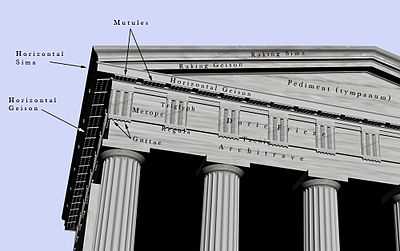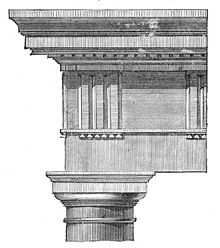Gutta

A gutta (Latin pl. guttae, "drops") is a small water-repelling, cone-shaped projection used in the architrave of the Doric order in classical architecture. At the top of the architrave blocks, a row of six guttae below the narrow projection of the taenia (fillet) and cymatium formed an element called a regula. A regula was aligned under each triglyph of the Doric frieze. In addition, the underside of the projecting geison above the frieze had rectangular protrusions termed mutules that each had three rows of six guttae. These mutules were aligned above each triglyph and each metope. It is thought that the guttae were meant to represent the pegs used in the construction of the wooden structures that preceded the familiar Greek architecture in stone. Water drips over the edges, away from the edge of the building.

See also
References
- Robertson, Donald Struan (1929). A Handbook of Greek and Roman Architecture. Cambridge: Cambridge University Press. OCLC 1076246.